Throughout your life as an athlete, you will experience transition. As a student athlete, you experience it as you advance through the levels of your sport and then into University athletics and from amateur to professional.
Even once you’re in the pros, you’ll transition from in-season to off-season, regular season to post-season playoffs, changing teams or divisions (depending on your sport of course), and then transitioning from being an active player to a retired player. You may transition to on a team and off a team and back on a team, right? So MANY transitions!
How to Create a Smooth and Trauma-Free Transition
As with everything, practice makes perfect. The more you practice accepting and embracing transitions, the easier they become. The more you plan in advance for transitions (even when you don’t know when or if they’re going to happen), the less drama and trauma you will experience through the transition.
The Three Phases of Transition
In order to plan effectively, you need to understand the transition process. No matter the nature of the transition, there are always 3 phases:
- Preparation
- Execution
- And settling in
The nature of these phases are relatively self-explanatory. The preparation phase can be long or it can be very quick, depending on you. I recommend doing a fair amount of prep. Really the more work you do here, the less stress you will have in the transition itself.
In fact, studies have shown that professional athletes who take the time to prepare for transition actually play better and have better and longer careers. While it may seem pointless to spend your time now preparing for something you don’t know when or if it will actually happen, those studies clearly show that you will gain immediate benefit from your preparation – EVEN IF YOU NEVER HAVE TO IMPLEMENT THE PLAN!
And it can be difficult to prepare for something when you don’t know the details or the nature of the transition or the timing, or really anything. Except that no matter the specifics, there are going to be some fundamental common issues, questions and requirements for each kind of transition.
So, it really is possible to make a plan – even if that plan looks like a list of questions and criteria for decision making.
Working with a business coach can make this process much easier. Here are some ideas to help you in your preparation:
Three Steps to Prepare for a Painless Transition
- Make a plan
- Gather support
- Be at Choice
Make a Plan
First start with your research. Very often, the thing that stops us from making a plan is all the unknowns. You’d be surprised, however, how much you can prepare even without knowing the details.
First, brainstorm the different kinds of transitions you think you will face. Then, one at a time (starting with the one that feels easiest for you to deal with).
Even with all the unknowns for each type of transition, there are common themes, common challenges and common decisions that you will need to make and common questions you will need to answer. So find out what those are for this particular kind of transition.
How do you find out what those things are? You have to ask:
- Ask athletes who have already made the transition
- Ask your coaches and trainers what they’ve seen in their years of experience (or what they’ve experienced themselves if they were in your position in their past)
- Are there books written about this particular transition phase? If so, get them and read them! Make notes of ideas for handling the change.
What kinds of questions should you ask?
- What issues, questions, concerns should I include in my plan?
- What resources will I need (and can you recommend any)?
- What are the biggest mistakes or regrets you have? If you could go back and do it differently, what would you change?
Make sure you take notes. If it’s OK with them, I recommend recording the call/meeting for future reference.
Once you’ve done your research, brainstorm all the ideas that appeal to you, all the questions or concerns you think will apply for this particular transition.
Then, to the best of your ability, create a plan for what specific actions you will need to take in each phase, in what logical order to create a smooth and trauma-free transition. Remember there are three phases to every transition – preparation, execution and settling in. You will need a plan for each phase.
Gather Support
Once you’ve got the outline of your plan, it’s time to gather support for your plan. Who can help you make this transition smooth?
- Your family, spouse, and close circle of friends
- Agent/Manager
- Mentors, coaches (including your business coach) and your team (financial planner, accountant, PR person, assistants, etc.)
Have meetings with them and show them your plan. Ask them:
- What do they think is missing from your plan? There may be action items, issues, questions and/or problems that you are not considering.
- What are their biggest concerns about your transition? This is an especially important question for spouses and children!
- How would they suggest solving the problems/issues that the plan outlines?
- What resources can they recommend to help with these issues (For example, do they know a relocation expert for a move resulting from changing teams?)At the end of each meeting, ask them to make a commitment to specific actions that they will take responsibility for when this transition happens and make note of that on your plan. You don’t have to do everything yourself and knowing who will be responsible for what, can remove a lot of your stress and uncertainty once you are in the execution phase.
Be At Choice
Sometimes you are making an obvious choice about your transition. You are choosing the school or team. You are choosing when to go from amateur to pro. You are choosing to retire. And studies have shown that when the athlete is choosing the transition, there are a lot fewer repercussions from that transition. Athletes experience less depression, less stress, fewer poor choices when they feel they have control over the transition, that it’s their choice.
But often transitions are not chosen, they are thrust upon us by circumstances beyond our control! Injuries, being cut from a team, not making it into the playoffs or finals. And those same studies have shown that those transitions can cause tremendous pain, depression and poor decisions. So, how can you be “choosing” when your transition is something that is beyond your control?
“It’s Not What Happens to You, It’s What You Do About It” — W. Mitchell
I had the distinct pleasure of seeing W. Mitchell speak at a conference. His story is a series of pretty horrifying things happening to him that were not his choice. He writes about his story in his book (affiliate link) which I highly recommend.
You can’t choose what or when things happen. There are many things outside of your control. You can, however, choose how you respond to those things. You can choose your mindset around change. You can choose to trust your ability to pivot. And you can choose to act with confidence in your plan. Of course, its much harder to do that if you haven’t prepared for transition.
Embrace the discomfort of the uncertainty, because you will transition. That’s a given. It’s up to you to choose to transition with grace.

